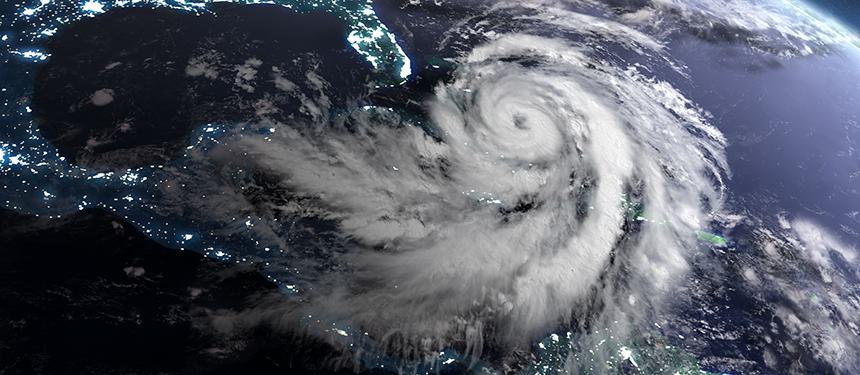Atlantic hurricane season outlook 2023

What is the Atlantic Hurricane Season?
The Atlantic hurricane season occurs on an annual basis between 1st June and 30th November, affecting areas of the Atlantic Ocean, Gulf of Mexico, and Caribbean Sea. Storms become hurricanes once wind speeds reach 74 miles per hour (119kph), and the weather systems are rated from Category 1 (lowest) to 5 (highest) on the Saffir–Simpson hurricane wind scale (SSHWS).
Despite a slow start, there were 14 named storms in 2022, including eight hurricanes. Two hurricanes were classified as major, rated as Category 3 or higher, including hurricanes Fiona and Ian. Category 4 Hurricane Fiona was active between 18th and 24th September, and resulted in 32 fatalities and caused billions in damage across Puerto Rico, the Dominican Republic, Bermuda, and Eastern Canada. Category 5 Hurricane Ian was active from 26th to 30th September, causing 161 fatalities and catastrophic damage to western Cuba, and the Florida Peninsula in the United States. The National Oceanic and Atmospheric Administration (NOAA) noted that activity was near normal in terms of the number of named storms and hurricanes, but slightly below average in terms of the number of major hurricanes. However, the 2022 season was the third costliest to date, with more than $110 billion in damage recorded throughout the region.
Outlook for 2023
Security and operational risks are significantly heightened across the Caribbean and Atlantic basin regions, as the risk of major hurricane activity is Highly Likely (80%-90%). Long-term averages between 1991 and 2020 indicate that 14 named storms, seven hurricanes and three major hurricanes are the annual base rates, but activity is expected to be less in 2023 due to the El Niño phenomenon. El Niño is anticipated to cause slightly cooler temperatures in the Atlantic Ocean and stronger vertical wind shears, making hurricane formations less likely. Mexico’s National Meteorological Service (SMN) estimates 10-16 storms will occur in 2023, with NOAA scheduled to announce their seasonal outlook by 25th May.
Hurricanes are capable of producing significant real time and residual effects on business operations. Heavy rains and strong winds can cause significant storm surges, flooding, and infrastructural damage. Major hurricanes can result in casualties and fatalities on a mass-scale, sometimes regardless of the quality of local infrastructure. In the event of major hurricane activity, declarations of States of Emergency (SoEs) and evacuation orders are common. There are high levels of uncertainty with regards to the timing and trajectory of hurricanes beyond the near term (24-48 hours), complicating risk mitigation and evacuation plans.
Risk mitigation measures
Prior to hurricane season
- Review evacuation plans: Ensure actionable evacuation plans are in place, including the temporarily scaling down of on-site work and moving both staff and assets.
- Identify evacuation triggers: Establish your company’s risk tolerance and confirm evacuation plans accordingly.
- Establish business continuity plans: This can include storage of assets, working from home procedures and protecting work sites.
Preparation for hurricane season
- Monitor local weather warnings: Both local weather forecasts and international organisation such as the National Hurricane Centre (NHC) will give advance warning in the event of a storm forming.
- Maintain a ‘grab bag’: Staff should pack a grab bag of essential supplies which allows them to be self-sufficient for 72 hours.
- Confirm emergency response protocols: Ensure staff are aware of the internal communication channels to use in the event of a major hurricane.
In case of an impending storm
- Identify a viable shelter: The safest location is in interior rooms on the second floor of a robust building away from windows.
- Establish whether evacuation measures need to be actioned: Quickly decide whether those in the passage of the storm should evacuate or stand fast.
- Follow all directives issued by authorities: This includes road closures, mandatory evacuations and any other directives.
- Anticipate operational disruption: Disruption to power and utilities is possible; alternative power supplies, adequate supplies of water, food and fuel, and back-up communication methods should be in place.




